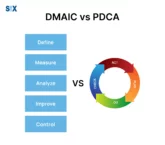The Importance of Having a Process Improvement Plan for Your Business
A process improvement plan is a strategic roadmap designed to enhance organizational efficiency, reduce waste, and boost overall performance. It’s a systematic approach that combines data-driven analysis with proven methodologies to identify, implement, and sustain meaningful changes in business processes. Key Highlights Understanding Process Improvement Plan Process improvement plan is the backbone of any successful […]



























